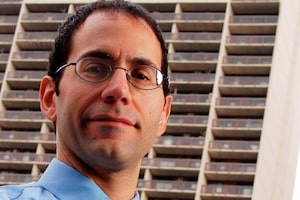Whenever the notion of a volatile sideways market bubbles up among portfolio managers, they claim indexing will fail in comparison to active stock selection. In other words, portfolio managers argue that trendless volatility is ripe for active management skill to shine. They call it a stock pickers' market. I call it a myth for retail investors.
Managers outperform before fees
For the nine years through June 30, 2013, U.S. stocks posted a total return just north of 3 per cent annually in Canadian dollars. The global manager database eVestment Alliance contains more than 1,500 large-cap or all-cap active U.S. equity mandates offered by portfolio managers around the globe. Of those, 884 have a nine-year record through June.
Fully 75 per cent of the mandates (i.e. 663) outpaced the broader market return before fees. This supports the notion of a stock-pickers' market. But the numbers change significantly when incorporating fees.
Retail investors out of luck
The proportion of outperformers slips below half at a fee of 1 per cent per year. This list shortens to below a quarter when factoring in 2 per cent annual fees. Indeed, this hypothetical calculation is in line with actual rankings of retail funds in similarly flat markets.
In late 2008, near the height of the financial crisis and related bear market, U.S. stocks had just completed a so-called lost decade. As detailed in our December 2008 Research Bulletin, the S&P 500 had lost 2 per cent annually, while the Dow Jones Industrial Average managed a small gain.
No more than one-third of actively managed mutual funds managed to match or beat index returns net of management expense ratios in what should have been a stock picker's market. My recent rankings of retail funds yielded even dimmer results.
Using GlobeInvestorGold's Mutual Fund Filter, I found 86 U.S. equity investment funds with at least 15 years of history. I removed index funds, funds priced in U.S. dollars, those with the word "hedged" in the name and duplicate versions of an existing older fund.
This left just 44 funds, which you can find at this link. An underwhelming half-dozen (less than 14 per cent) outpaced the U.S. market's 1.94-per-cent annualized gain for the 15 years through June.
Tilting the odds in investors' favour
There are lessons in these less-than-scientific rankings and they centre on the notion of tilting the odds more in investors' favour.
The most obvious factor that stands out from the above analysis is the impact of fees. The gross-of-fee data implies that active managers have nicely navigated the market's volatile path. But standard retail fees more than offset managers' skill.
Secondly, more flexible mandates tend to thrive in the hands of skilled managers. This can be interpreted as favouring 'all-cap' U.S. mandates. But I'd like to see more investors take this notion of flexibility a step further by resisting the urge to pick separate U.S., overseas and emerging markets funds and ETFs. I'd rather see investors – passive or active – opt for broader-based global funds.
Finally, a tilt toward value stocks or managers with a good dose of sensitivity to the price paid for stocks is a must – and a trait shared by most outperformers. Implicitly assumed in this factor is to choose an active manager that doesn't snuggle up too closely to the index. After all, the conviction to look different from the index is a must if there is any hope of outperformance.
Dan Hallett, CFA, CFP, is director of asset management for HighView Financial Group and a contributor to thewealthsteward.com.
 Dan Hallett
Dan Hallett